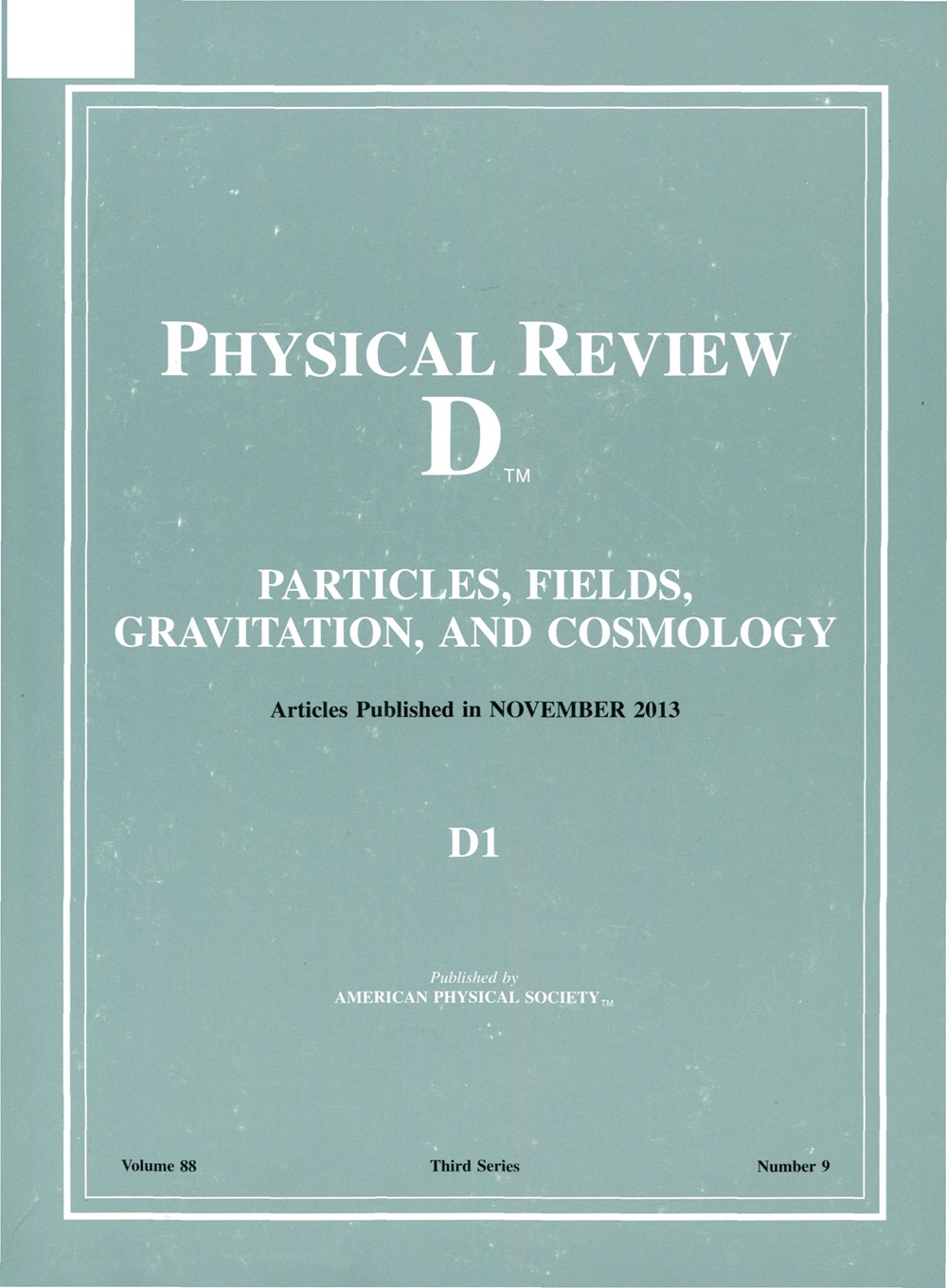Exploring entanglement and spectral split correlations in three-flavor collective neutrino oscillations
IF 5.3
2区 物理与天体物理
Q1 Physics and Astronomy
引用次数: 0
Abstract
In environments with prodigious numbers of neutrinos, such as core-collapse supernovae, neutron star mergers, or the early Universe, neutrino-neutrino interactions are dynamically significant. They can dominate neutrino flavor evolution and force it to be nonlinear, causing collective neutrino oscillations. Such collective oscillations have been studied numerically, for systems with up to millions of neutrinos, using mean-field or one-particle effective approximations. However, such a system of interacting neutrinos is a quantum many-body system, wherein quantum correlations could play a significant role in the flavor evolution—thereby motivating the exploration of many-body treatments that follow the time evolution of these correlations. In many-body flavor evolution calculations with two neutrino flavors, the emergence of spectral splits in the neutrino energy distributions has been found to be correlated with the degree of quantum entanglement across the spectrum. In this work, for the first time, we investigate the emergence of spectral splits in the three-flavor many-body collective neutrino oscillations. We find that the emergence of spectral splits resembles the number and location found in the mean-field approximation but not in the width. Moreover, unlike in the two-flavor many-body calculations, we find that additional degrees of freedom make it more difficult to establish a correlation between the location of the spectral splits and the degree of quantum entanglement across the neutrino energy spectrum. The observation from the two-flavor case, that neutrinos nearest to the spectral split frequency exhibit the highest level of entanglement, is more difficult to ascertain in the three-flavor case because of the presence of multiple spectral splits across different pairwise combinations of flavor and/or mass states.探索三味集体中微子振荡中的纠缠和光谱分裂相关
在具有大量中微子的环境中,如核心坍缩超新星、中子星合并或早期宇宙,中微子-中微子相互作用在动力学上是重要的。它们可以控制中微子风味的演化,并迫使其成为非线性的,从而引起中微子的集体振荡。这种集体振荡已经用数值方法研究了,对于有数百万个中微子的系统,使用平均场或单粒子有效近似。然而,这样一个相互作用的中微子系统是一个量子多体系统,其中量子相关性可以在风味进化中发挥重要作用,从而推动探索遵循这些相关性的时间演变的多体处理。在两种微中子味的多体味演化计算中,发现微中子能量分布中谱裂的出现与谱上的量子纠缠度有关。在这项工作中,我们首次研究了三味多体集体中微子振荡中光谱分裂的出现。我们发现光谱分裂的出现与平均场近似中发现的数量和位置相似,但与宽度不同。此外,与双味多体计算不同,我们发现额外的自由度使得在中微子能谱上建立光谱分裂位置和量子纠缠程度之间的相关性变得更加困难。从两种味道的情况观察到,最接近光谱分裂频率的中微子表现出最高水平的纠缠,在三种味道的情况下更难确定,因为在不同的味道和/或质量状态的成对组合中存在多重光谱分裂。2025年由美国物理学会出版
本文章由计算机程序翻译,如有差异,请以英文原文为准。
求助全文
约1分钟内获得全文
求助全文
来源期刊

Physical Review D
物理-天文与天体物理
CiteScore
9.20
自引率
36.00%
发文量
0
审稿时长
2 months
期刊介绍:
Physical Review D (PRD) is a leading journal in elementary particle physics, field theory, gravitation, and cosmology and is one of the top-cited journals in high-energy physics.
PRD covers experimental and theoretical results in all aspects of particle physics, field theory, gravitation and cosmology, including:
Particle physics experiments,
Electroweak interactions,
Strong interactions,
Lattice field theories, lattice QCD,
Beyond the standard model physics,
Phenomenological aspects of field theory, general methods,
Gravity, cosmology, cosmic rays,
Astrophysics and astroparticle physics,
General relativity,
Formal aspects of field theory, field theory in curved space,
String theory, quantum gravity, gauge/gravity duality.
 求助内容:
求助内容: 应助结果提醒方式:
应助结果提醒方式:


